Majdanek Camp
Driving like a W009
Finally it stops raining – even we had between a gust of rain
coming in one second and gone the next. We also had a navigation problem, since
google map decided that it can't navigate.... but it still displayed
everything.... so we followed the highway along, since Majdanek is right near
Lublin it was not difficult to find. During we were driving a range rover
passed us with the licence plate W9-00009 right when Paul wanted to pass... and
then Paul discovered a new hobby to make driving more fun: passing cars as
often as possible.... and funny part was the W009 was then behind us and passed
us again.. guess we knew the short cut somewhere along the drive.
They arrived at the
Ghetto and went into the unknown
We arrived in this camp which was part concentration camp and
then also became an extermination camp
What also makes it super easy since you can drive around: ok
so first we didn't got it – after paying our 5 Zloty we thought we are in the
wrong parking lot – we are the only car and the camp is far in the distance, so
we thought the guard didn’t understand us that we wanted to go to the camp and
so we drove out again only to come back in again.... that is when we discovered
there are several different parking lots inside the camp. There is a lot still
left from the camp and not a lot of people here – I think we are too far away
from the main tourist route.
Concentration camp and then Death camp Majdanek:
- It operated from Oct 1, 1941 – Jul 22, 1944 and the Nazis went to no effort to conceal it
- people driving by had an unobstructed view on the camp and the gas chambers
- It started out in 1941 as a POW camp for soviet prisoners – originally the plan in Oct was for 50.000, but already by Dec the plan was for 150.000 – over the whole time of operation around 300.000 prisoners were held here, but the number of prisoners at any given time was not very high
- By Oct 1941: of the 2000 POW soviets to built the camp only 500 were still alive, in mid Dec barracks for 20.000 were ready when typhus broke out and all forced workers died or got shot in the nearby Krepiecki forest, others were left without supervision in the so-called death-barracks.
- When they started out, the barracks had no beds at all the prisoners slept on the ground – starting in Spring 1942 the 3-storey plank beds came into the barracks as well as 2 stoves per barrack. It was only in autumn 1943 that the lavatories and wash-stands were installed. In spring 1943 when it was at it’s peak barracks designed for 250 prisoners often held 500 and more.
- The victims arrived at the train station of Lublin and had to walk 2 km to Lublin camp – registration did not always happen right away, sometimes they had to wait for days or weeks
- one inmate wrote in a letter: "We work from 3 o'clock in the morning until 9 o'clock in the evening. Can you imagine - todays heat, 18 hours of being hungry, we barely stand on our feet, not to mention working. But maybe with the help of God we will bear it, the hope is this torment will come to an end soon. In case any of you is here in Lublin, go along the road leading to Hrubieszow and maybe you can see us..."
The Death camp
- The gassing was performed in plain view of the other inmates – the gas chambers started to operate in Sept 1942 – when it became part of Operation Reinhard
- Originally the corpses were buried in mass graves, from Mid 1942 they were burned in the crematorium and starting in spring 1943 in open air crematorium pyres (they were laid on lorries chassis and sprinkled with Methanol) – around 100 were burned at a time: eye witnesses talked about billows of gray and black smoke, the smell of burning was overwhelming and made it nearly impossible to breathe
- Due to the proximity to Lublin, prisoners were able to send letters smuggled by civilian workers
- The most notorious execution happened on Nov 3 & 4, 1943 when 42.000 Jews were shot with machine guns in the back of the head with music playing in the back ground in one day as part of the “Operation Harvest Festival” (Aktion Erntefest) –this was the largest mass execution in the history of Nazi camps. (They brought in 100 SS guards from Ausschwitz and did it in full view: 100 victims at a time - they had to lie down on top of the dead bodies from the previous group)
- The also executed by shooting in 1944 on
Jan 21: 600, Jan 23: 180 and another 200 on Mar 23. The last execution took
place on July 21, 1944 when several hundred people were murdered only 2 days
before the Soviets arrived
- Escaping: over 500 attempted, 200 from the camp and 250 on transports and 70 from external commandoes
- clothing from the Operation Reinhard camps (Sorbibor, Belsec, Treblinka) were sent here
The end of the camp
- around 15.000 prisoners were transferred to other camps
- 1000 of prisoners were forced to march to Auschwitz (by the way it is 380 km to Auschwitz), t
- he Soviets still found 1500 prisoners - to sick wot walk - some of them were POWs
- It was nearly intact when the Russians came fast on July 24, 1944 2 days after it was abandoned, the Germans did not have the time to destroy its infrastructure and remove incriminating evidence: It was the 1st concentration camp discovered by the Allied forces – it is the best-preserved concentration camp of the holocaust (it has a total of 80 original buildings – 1/3 of the original camp) - It contained a large storage depot for property and valuables taken from Jewish victims in the killing centers
- After the war the ashes in the area of the former camp were collected and formed into a mound
How many were and died in Majdanek?
- with the lackinf of documents it is not possible to track on how many died here: the numbers are still ranging from 78.000 - 1.3 Mill
- most of the files from Majdanek were stored in the Soviet Union and were never released
- the Soviet Union announced when they arrived, that 1.7 Mill people died here
- in 1948 the commission for the Investigation of Nazi crime published a report stating 360.000 died here
- Later discovered that only 300.000 were send to Majdanek: around 45.000 were transferred to other camps, 20.000 released and 500 escaped: which would mean around 240.000 dying here
- The official estimated death toll number (as of 2007 Majdanek museum) is 78.000 (with 150.000 people coming into the camp
- on the Duesseldorf trial of Majdanek the West German in the late 1670s: government charged the Nazis with no less than 200.000 people
Majdanek after WWII - Soviet
KNVD:
- The soviet army used the camp for prisoners of the home army resistance loyal to the polish army and used the same facility to imprison and torture polish patriots
- On Aug 23, 1944: 250 inmates were
transported to the rail way station and in cattle cars transported to Siberia
Visiting Majdanek
camp:
another interesting fact is: that the camp is within today's city limits - I don't know if I would live overlooking a camp:
Mausoleum: First we went up to the Mausoleum: this is one sobering spot, since you stand and you look
at a mountain of ashes and dirt... that is what was left after cremation – that
really gets to you, when you see that huge pile of ashes (During the time of
the camp existence, the ashes were used as fertilizer).
The inscription on the top translates into "Let our fate be a warning to you"
the ditches: right behind are the ditches... and you stand there and you
can't believe it – that it was here that they shot all the Jews in one day with
machine guns in a mass execution: "Harvest Festival" or also called Bloody Wednesday
Crematorium: We saw the rooms and the ovens – also they had there a large
sarcophag, during the operation put in the remains of the victims. The original Crematorium got burned July 22, 1944 by the Nazis - but the oven were still intact - the crematorium got then reconstructed
The fence: the fence going around the whole camp – and this is a huge
camp is totally intact: it is double row – with a “death strip” between the 2
barbed wired fences and a lot of guard towers along... and in the background
you can always see the town
the barracks:
a lot of barracks are missing, but there are still a lot of
them there and some of them had exhibitions about extermination camp and
Operation Reinhard, about Majdanek and the live in the camp. Two of them still
had beds in them. Walking through the barracks we saw some leftovers from the washrooms:
sinks and toilets, we saw the delousing and disinfection area: We
saw the showers with the old original rusty shower heads - and along the wall they have the bath for desinfection
The gas chamber barrack:
we saw the room where the gassing took place and we saw the gas
cylinders they used and regulated the Carbon monoxide going into the chamber:
and above the cylinders was a window through which you could look inside the
chamber – so they could check out the gas worked. Also on the walls you can see the blue color: Prussian blue which is caused by the use of Zyklon B. Overall Majdanek had 4 gas chambers - this was very sobering to see, it makes it real. As well we saw walls with stacks of empty Zyklon B cans and Carbon Monoxide gas cylinders.
Rose garden: today only a grass field – it was the place for
selecting Jewish prisoners – done by the SS doctor
The shoes: In
one of the barracks we saw walls of shoes from the victims – after the liquidation
of the camp, there were still 430.000 pair of shoes!! When you stand in that
barrack and you see the “wall” of shoes – you nearly can’t believe it and then
again we should assume each pair belonged to a person
Remembering: in
another barrack they had a lot of testimonies and descriptions on victims who
were in this camp... that made the memories to them all come alive. What was
something that made it come alive were little cards with pictures and names –
they had them everywhere: you could take the cards with you and on the back was
either a short description on what happened to the person or something they
said: and on the wall near it was a picture, their life as well as any other
documents or testimony’s they had… this made you realize on how different all
the people were.
You will not be
forgotten: In one of the barracks was a memorial for all the unknown
victims with lights and barbed wire, there are so many people we don’t even
know their names
Camp Road: we discovered a glass covering an area and it was part of the
old camp road – over 4 km of road were built by the prisoners with tombstones
from jewish cemeteries in Lublin. And if looking closely you can still see some
writing on the tombstones
Memorial to Struggle
and Martyrdom: erected in 1969 – we didn’t walk to it, because it started
to rain again.
Seeing the rows of barracks – the guard towers – and the
fence made this camp coming quite alive.
.
Sculptures:
- 3 eagles: the german liked the sculpture from Mai Albin Boniecki – they thought it is representing German power – but it did represent: the freedom of Poland – brotherhood and triumph. – some of the ashes from the crematorium were placed into the sculpture – the original on the mausoleum got destroyed and a reconstruct is now visible
- Tortoise: also made by Abin Boniecki “make haste slowly” – it was a call to passive resistance for the prisoners
- The castle: made by prisoners in 1943 as an order of the SS chief of Field II – today it is protected in a house
This was another day reminding us on what happened – on how
many millions of people did loose their live in the 20th century:
the holocaust – WWI & WWII – Stalin and Mao: it is unbelievable on what
happened. But having extermination camps is really something that makes you
wonder on you ask yourself: how could this happen.
.
People who were here:
- Helena Kurcyusz: born 1914 in Warsaw, she married a lawyer in 1934 and graduated in 1939 as architect, she became part of the underground struggle ZWZ and then the AK, she got arrested in 1942 by the Gestapo and came in 1943 to Majdanek. She took care of Belarussian boys and took notes, in 1944 she got transferred to Ravensbrueck. Between 1975-81 she was a crown witness on the trial of the Majdanek SS men. Her notes and drawings became an important material after the war to commemorate the prisoners of Majdanek. After the war she was an architect and urban planner, she was teaching at the university and got a medal for polish town planners. She died in 1999. She said I must emphasize the beautiful role played bye the polish civilian workers. It was thanks to them, that we always had illegal medications, parcels and letters.”
- Maria Albin Boniecki: Born in 1908, his father was deported in 1913 to Siberia – but could find a way back to Poland in 1921. In Warsaw he studied at the academy of fine arts graduating in 1929. During WWII he joined the polish underground army and was part of counter intelligence, he got arrested by the Gestapo in Oct 1942 and was send to Majdanek camp – he still sculptured and you can find some of them in the camp: like the 3 eagles – he also gathered information and smuggled it in and out the camp. With the help of the polish home army he escaped in 1944, he was part of the Warsaw uprising and was again captured ending up in Lamsdorf. After the war he settled in Paris with his wife and moved in 1957 to the US – where he died in 1995.
- Czeslaw Skoraczynski: born in 1911 in Lviv. During WWII he was part of the polish underground, in fall 1942 was arrested by the Gestapo and was in Gross-Rosen and Majdanek. He later wrote a book called “Live numbers” After the war he worked as a Soccer coach in Krakow and died in
- Brona Zysman: born in 1930 as a daughter of a famous tailor. Together with her sister (1926) she was send to Majdanek after the liquidation of the Ghetto in Nov 1942. In order to save her life, she said she was born in 1927. In May 1943 she and her sister got transferred in a group of 66 females to Lublin castle. They both worked as seamstresses and died in a mass execution on Jul 22, 1944 right before liberation
- Wanda Ossowska: born 1912, was a nurse - during WWII she was a courier for the home army, arrested in 1942 for participating in the resistance movement. In Jan 1943 she came to Majdanek with a death sentence to be done in 2 years, she worked as a nurse in the camp, was send in April 1944 to Ausschwitz, then to Ravensbrueck - she died in 2001 in Warsaw.

 Majdanek, lubelskie, Poland
Majdanek, lubelskie, Poland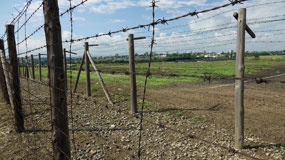
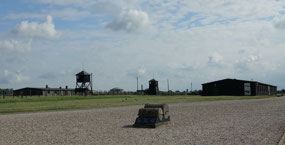
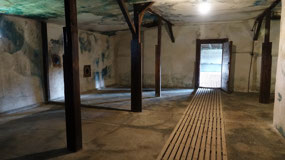
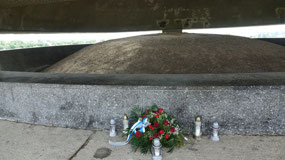

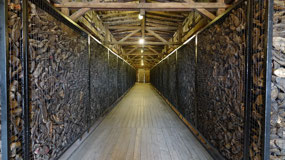
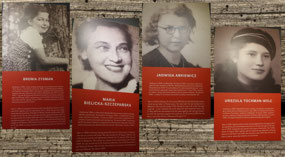




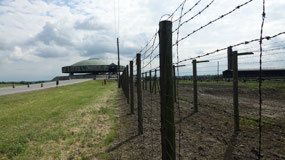
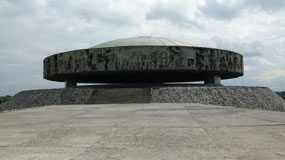
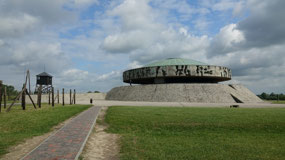
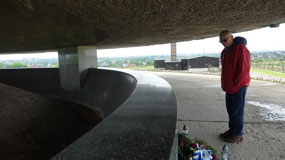
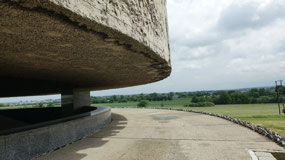
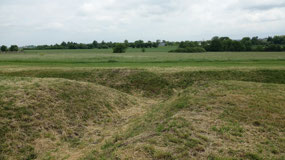
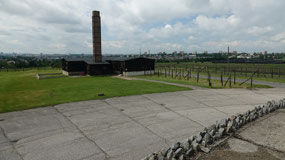

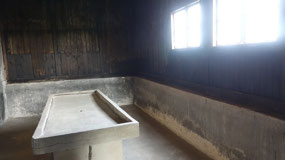
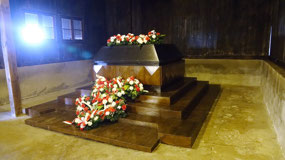
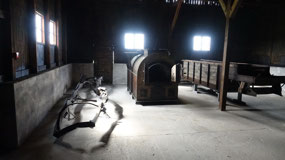
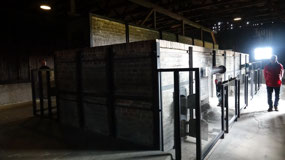
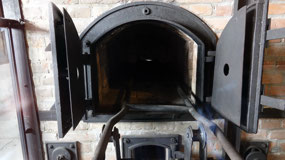
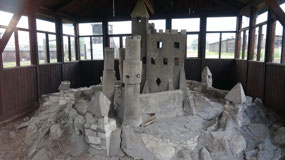
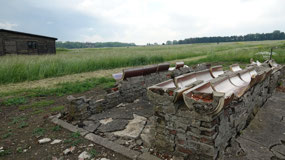
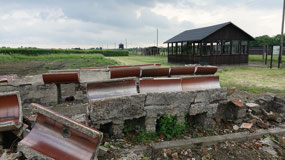
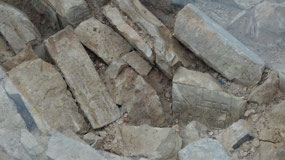
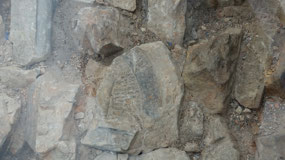
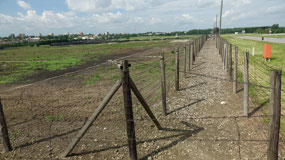
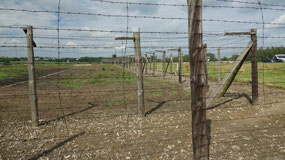
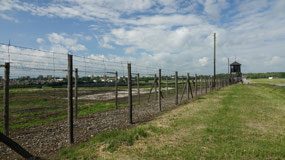
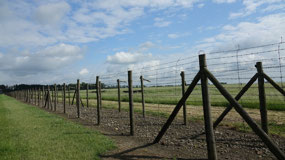
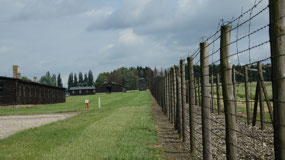
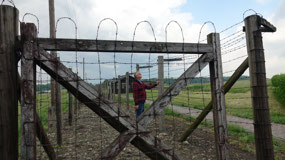
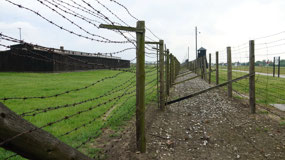
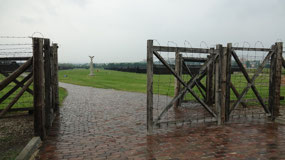
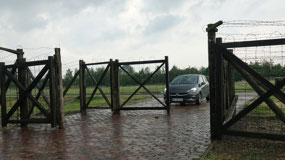
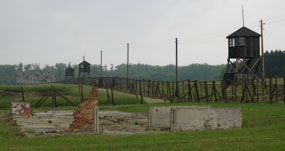
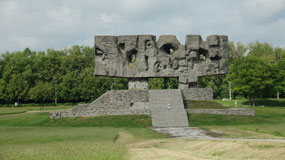
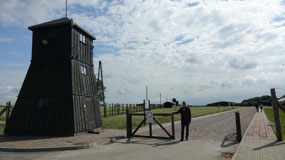
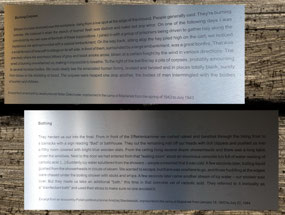
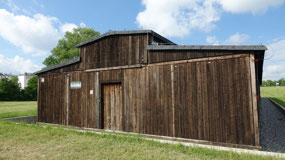
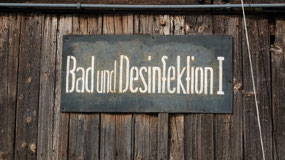
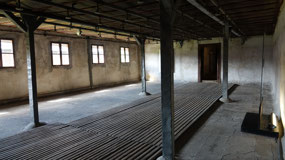
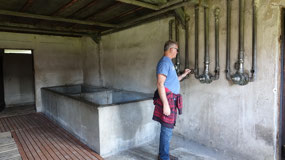
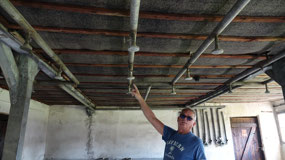
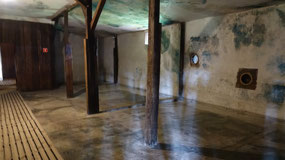
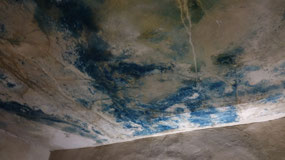
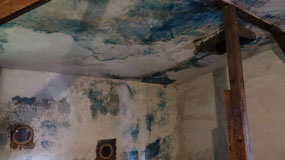

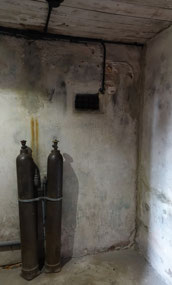
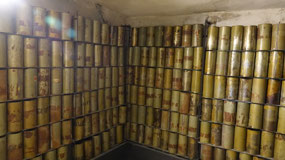

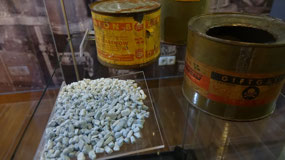
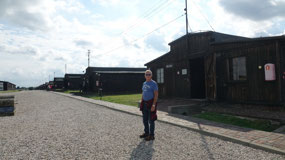
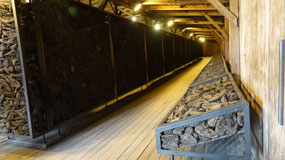
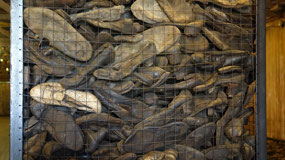
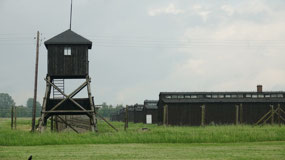
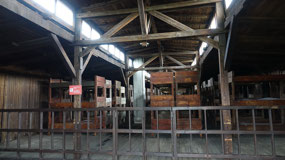
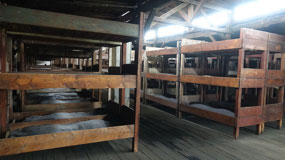
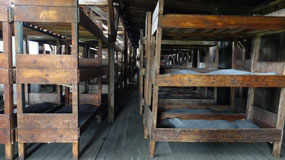

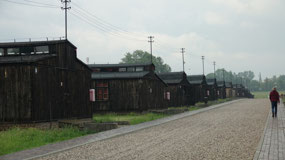
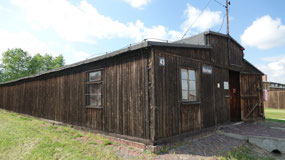
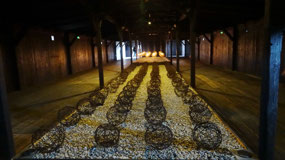
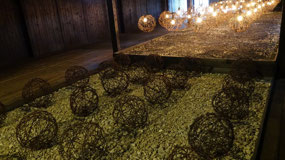
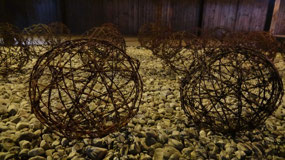
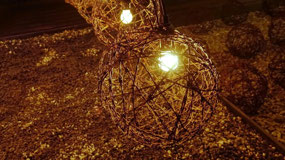
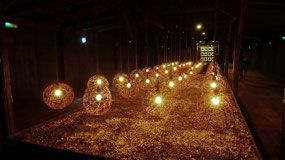
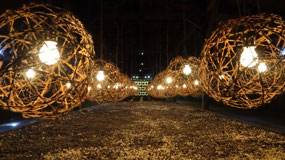
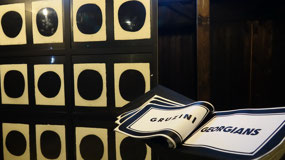
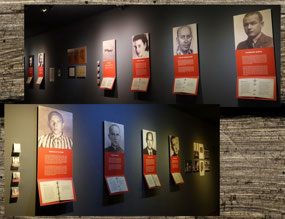
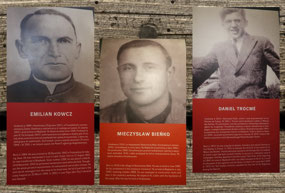
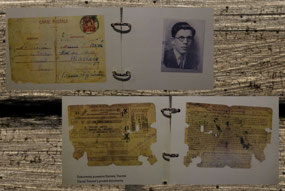

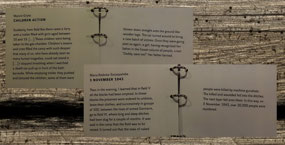
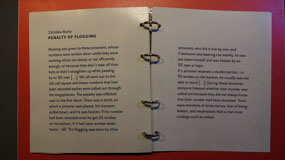
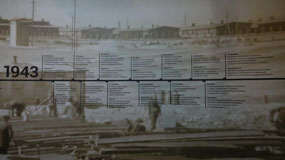
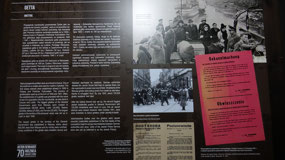
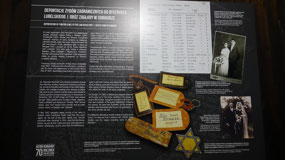
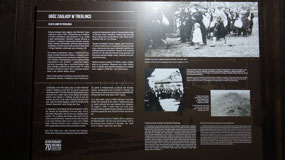

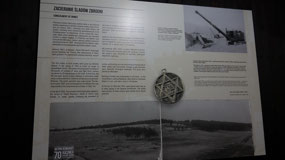
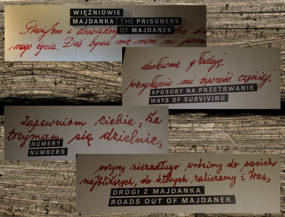
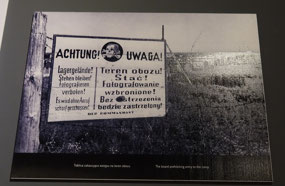
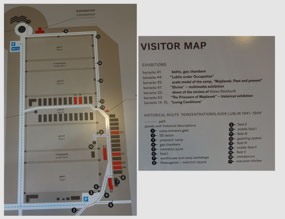
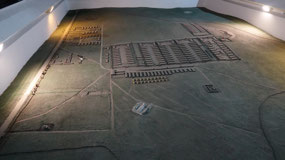
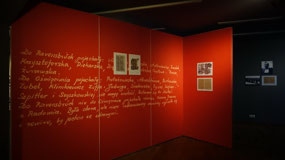
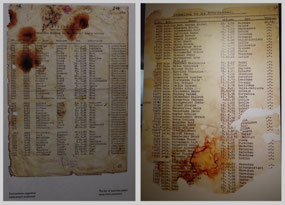
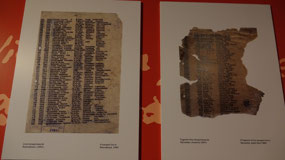
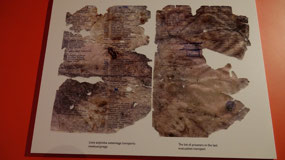
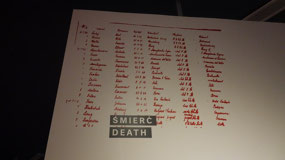

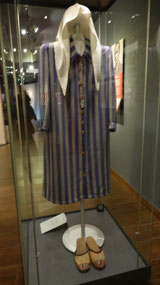
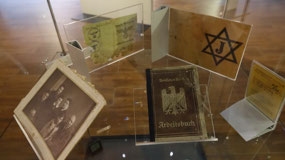

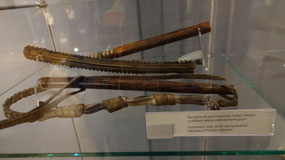

2025-05-23